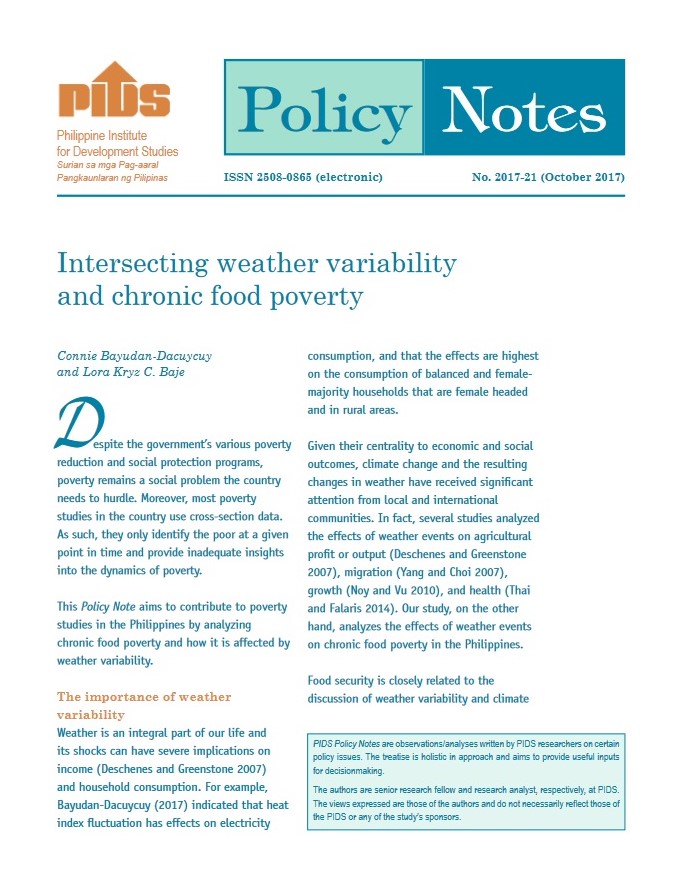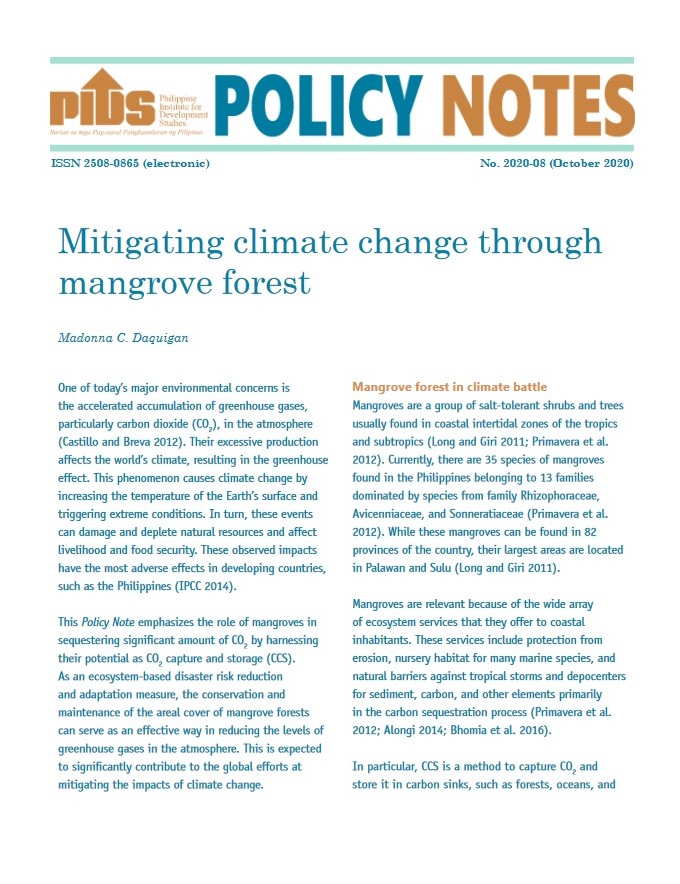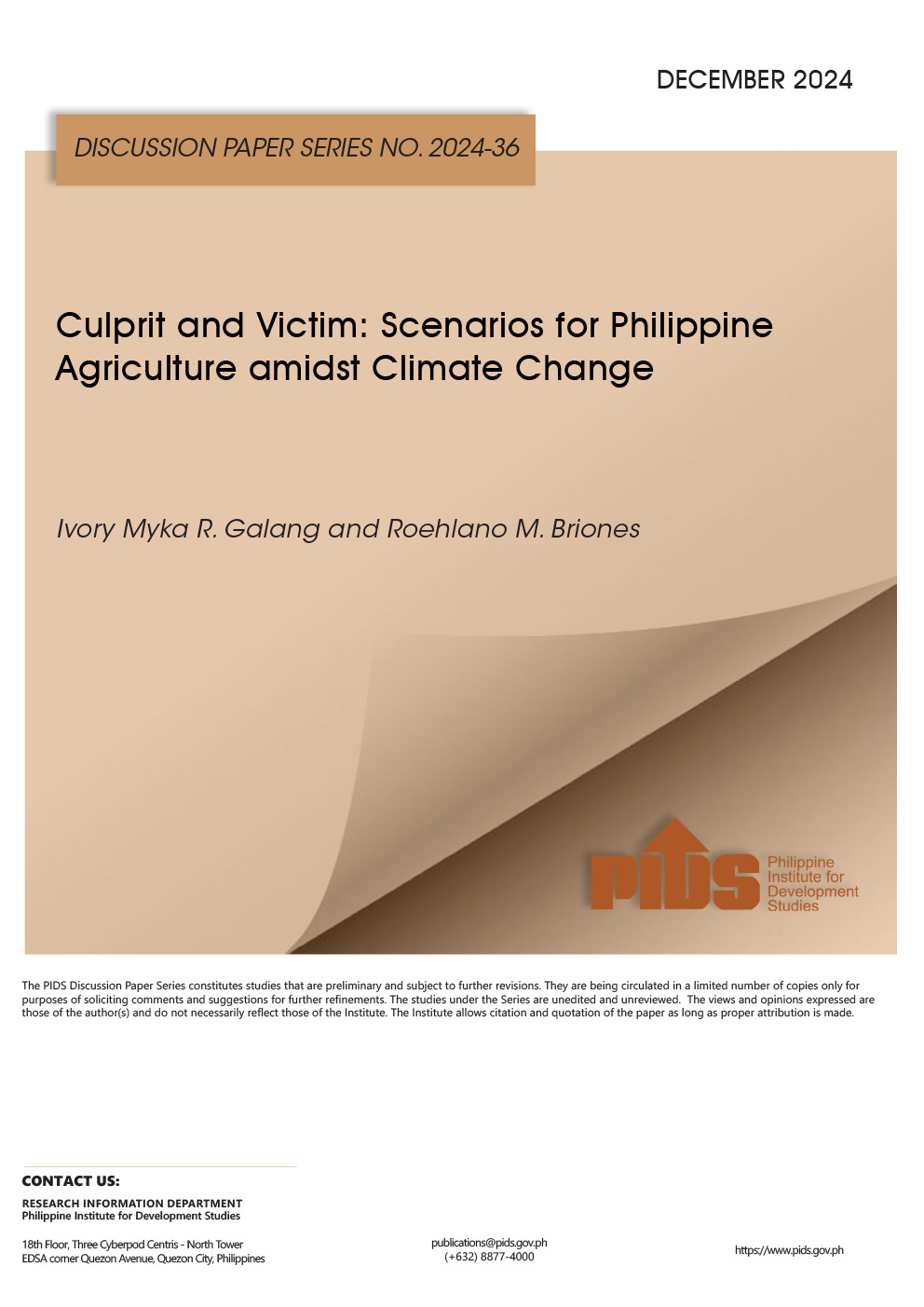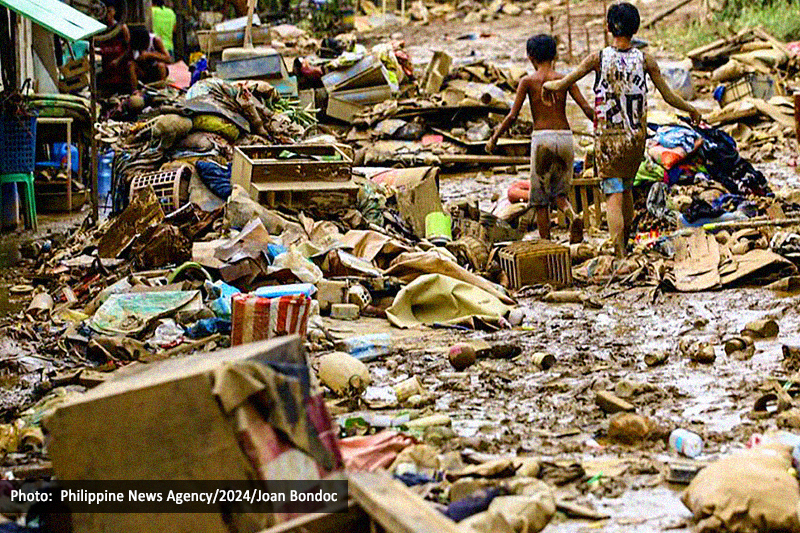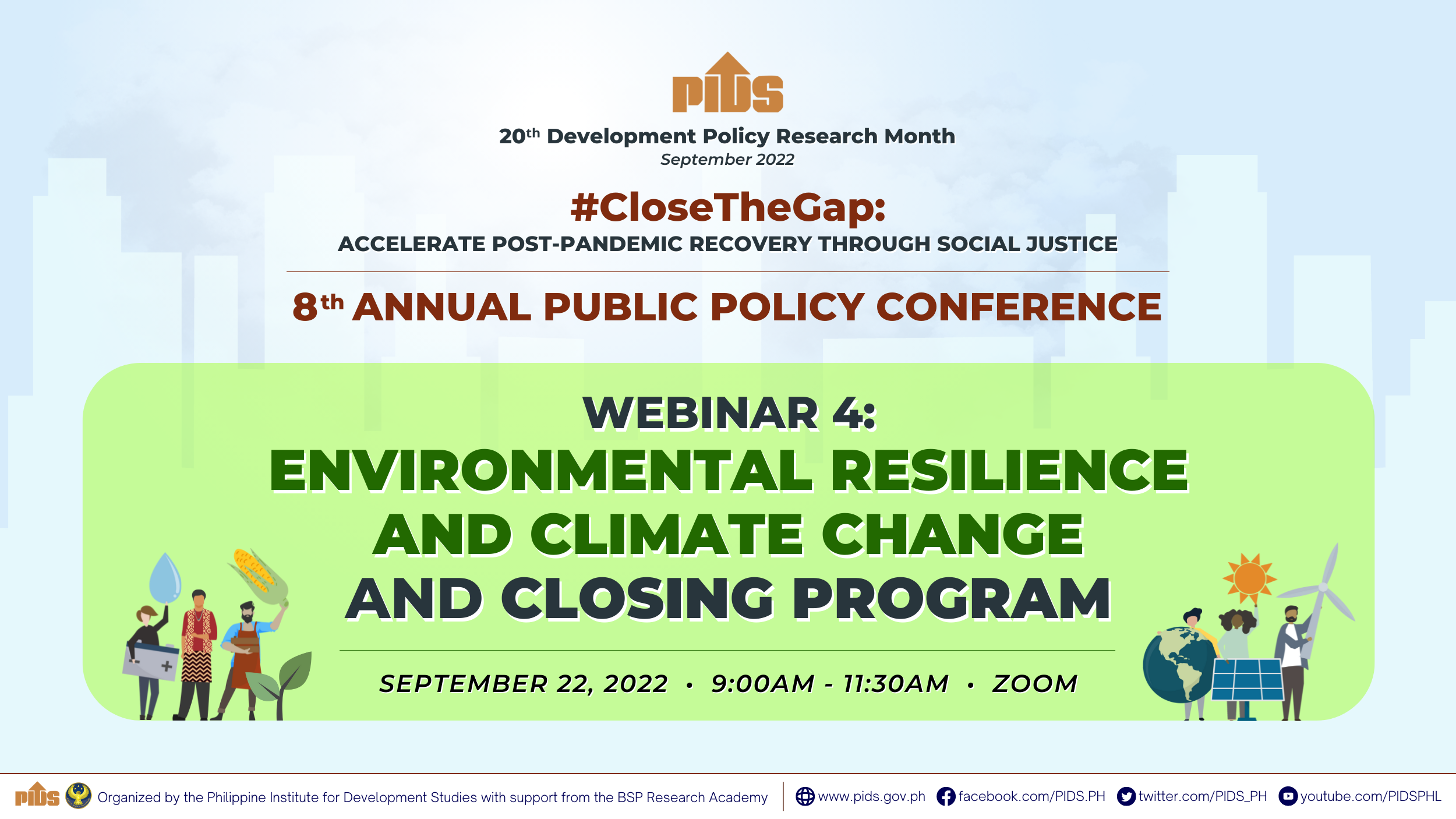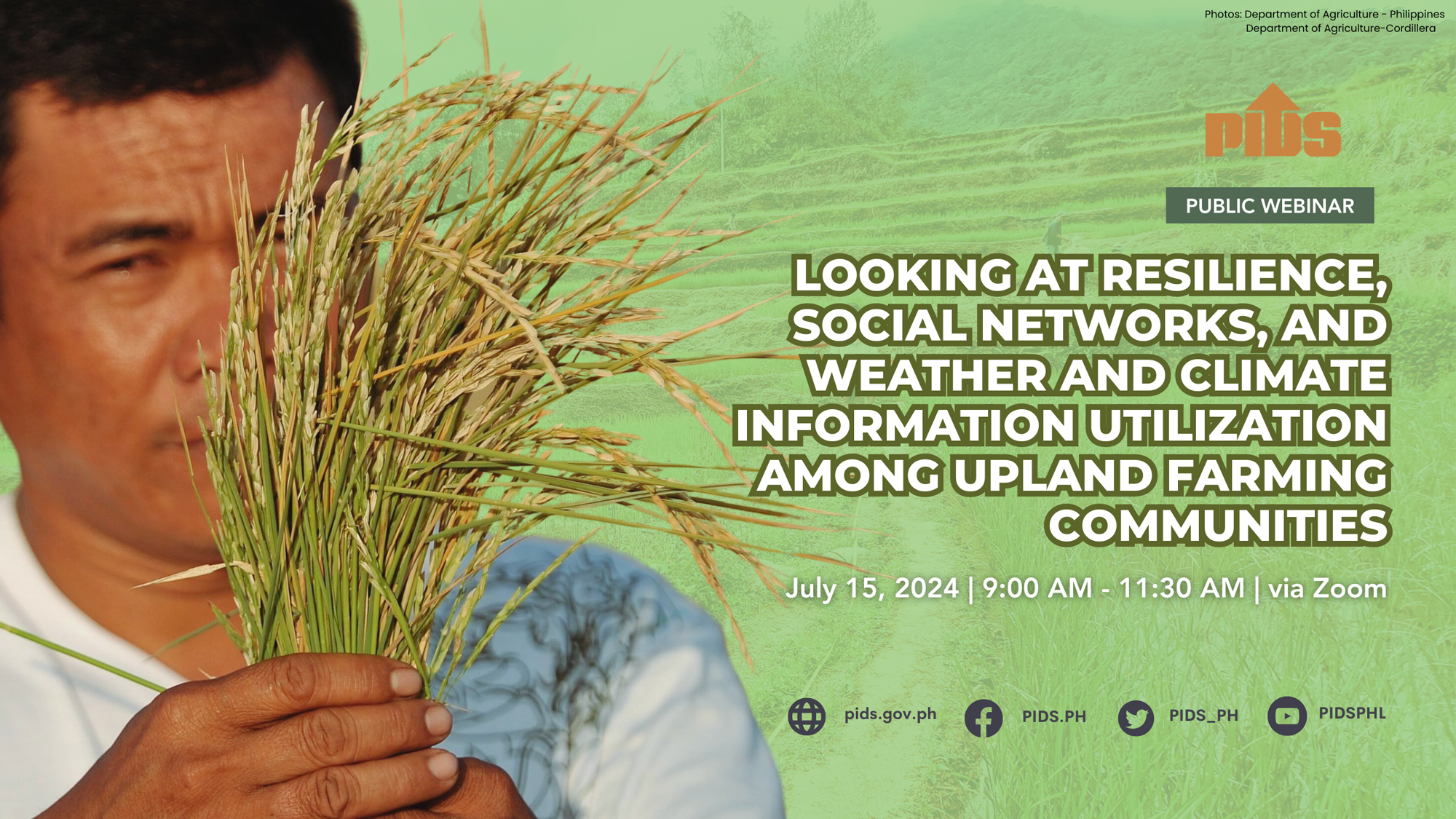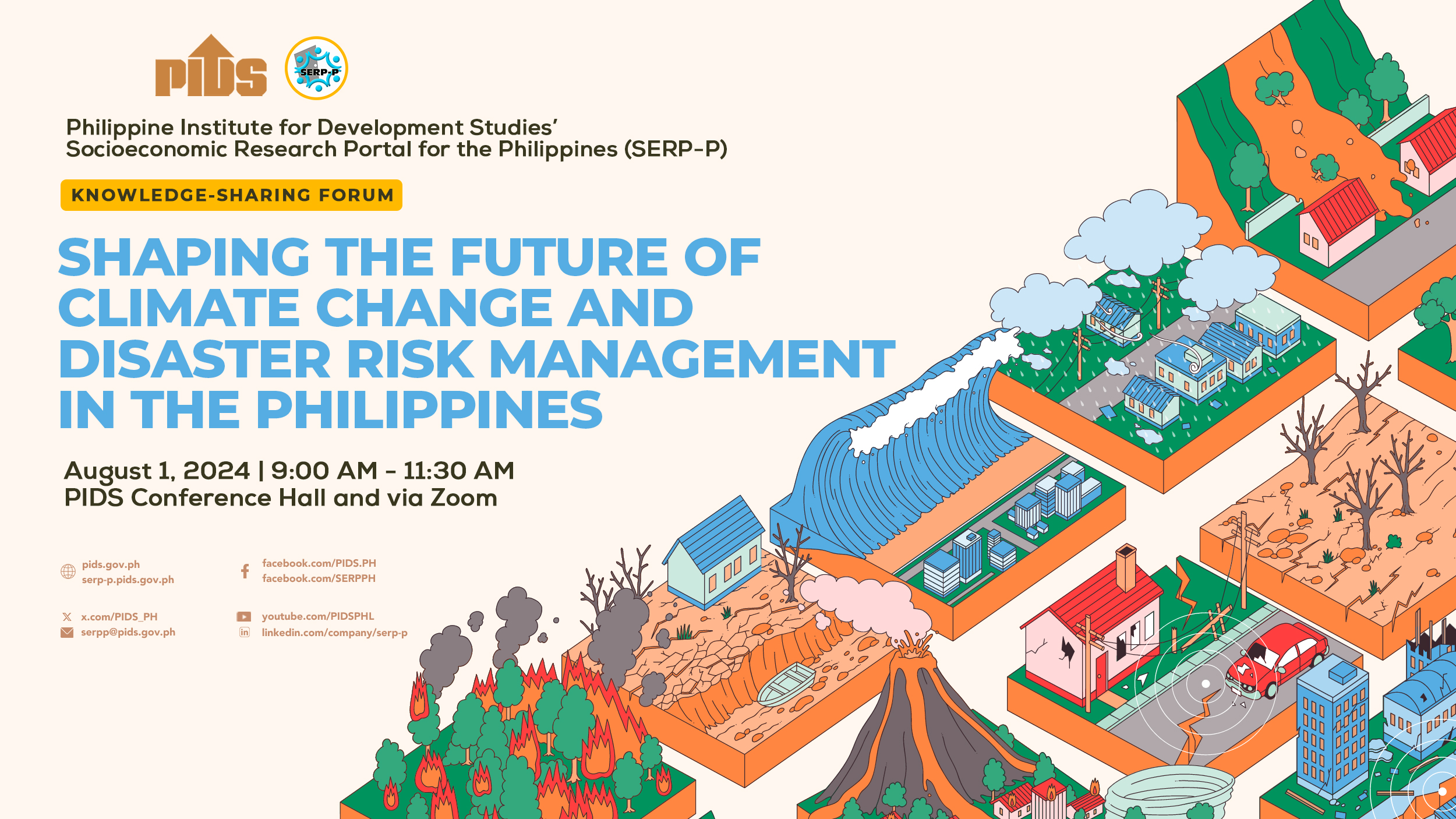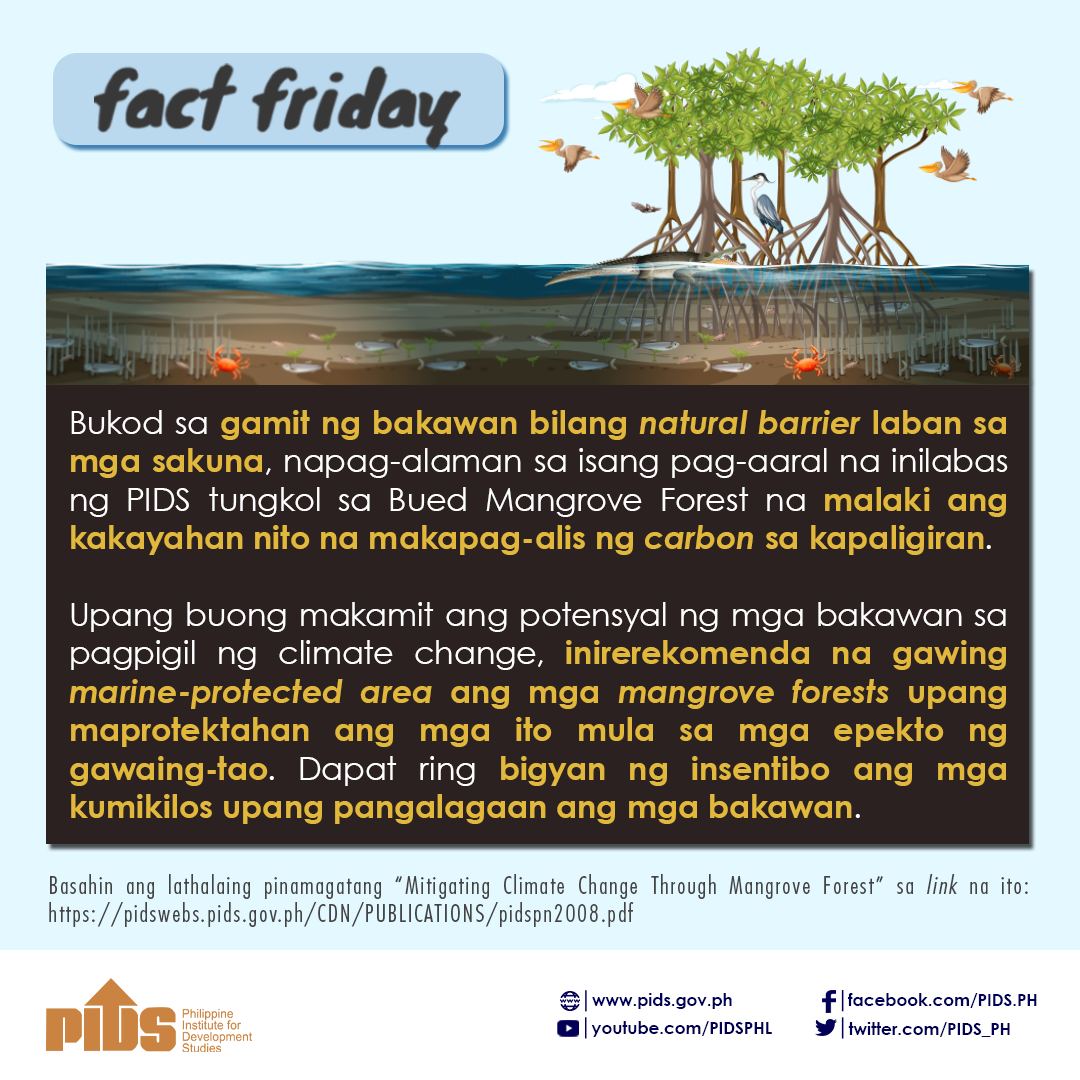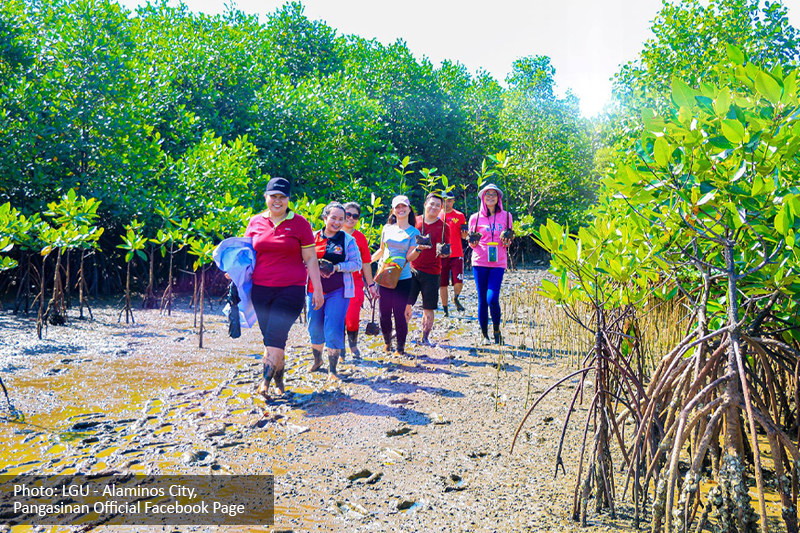
A study published by state think tank Philippine Institute for Development Studies (PIDS) found that mangroves can mitigate the adverse impacts of climate change.
In her policy note titled “Mitigating climate change through mangrove forest”, author and Philippine APEC Study Center Network’s Thesis and Dissertation Program grantee Madonna Daquigan found that mangroves can help address the impacts of climate change because of their potential as CO2 [carbon dioxide] capture and storage or CCS.
Instead of atmosphere emission, CCS captures CO2 and stores it in carbon sinks, such as forests, oceans, and lithosphere. CCS is an ecosystem-based disaster risk reduction and adaptation measure that can “serve as an effective way of reducing the levels of greenhouse gases” through the conservation and maintenance of the areal cover of mangrove forests.
“This mechanism has a significant role in the reduction of greenhouse gases in the Asia-Pacific Economic Cooperation (APEC) region,” Daquigan said.
One mangrove forest in Pangasinan is found to have a potential for large carbon sink, which helps the country’s climate change efforts. However, findings of the study showed that it is also one of the areas experiencing severe mangrove forest destruction.
“This continuous reduction of the population of mangroves can contribute significantly to the alarming concentration of CO2 in the atmosphere,” Daquigan explained, adding that “sustaining the role of mangrove forests in mitigating the impacts of climate should be a primary concern.”
The study, which focused on the Bued Mangrove Forest in Barangay Bued, Alaminos City, Pangasinan, revealed a very low diversity index resulting from the dominance of few mangrove species such as Avicenniaceae, Rhizophoraceae, and Sonneratiaceae.
“This trend is likely due to the accessibility of mangrove forests, exposing them to developmental activities. Many areas are also subjected to deforestation and forest loss,” Daquigan explained.
Other indicators such as biomass and carbon stocks were also observed to be low in forest areas that are adjacent to the mainland. With the forest being surrounded by commercial establishments, Daquigan said that these observations could also be attributed to “anthropogenic activities” such as illegal dumping of wastes by tourists, firewood collection, and boating around the area.
Fortunately, the study found high biomass and carbon stock values in areas near the sea, given enough water supply. This implies that the mangrove forest “has a potential for large carbon sink benefit, which can lead to notable strategies for climate change mitigation and provide adaptation measurements”.
Given its potential, Daquigan stressed the need to conserve, restore, and sustain the Bued Mangrove Forest to maintain and increase its carbon stock.
Moreover, she urged the government to adopt policies and regulations that can “mitigate the stress brought by human actions, especially in areas where ecotourism is dominant”. These include construction of boardwalks and wood deck around the trees, as well as information drive that can guide tourists on how to protect mangroves.
Another recommendation is to establish an incentive system such as the blue carbon trading or payment for environmental services, which can involve the local communities in protecting mangroves. ###
In her policy note titled “Mitigating climate change through mangrove forest”, author and Philippine APEC Study Center Network’s Thesis and Dissertation Program grantee Madonna Daquigan found that mangroves can help address the impacts of climate change because of their potential as CO2 [carbon dioxide] capture and storage or CCS.
Instead of atmosphere emission, CCS captures CO2 and stores it in carbon sinks, such as forests, oceans, and lithosphere. CCS is an ecosystem-based disaster risk reduction and adaptation measure that can “serve as an effective way of reducing the levels of greenhouse gases” through the conservation and maintenance of the areal cover of mangrove forests.
“This mechanism has a significant role in the reduction of greenhouse gases in the Asia-Pacific Economic Cooperation (APEC) region,” Daquigan said.
One mangrove forest in Pangasinan is found to have a potential for large carbon sink, which helps the country’s climate change efforts. However, findings of the study showed that it is also one of the areas experiencing severe mangrove forest destruction.
“This continuous reduction of the population of mangroves can contribute significantly to the alarming concentration of CO2 in the atmosphere,” Daquigan explained, adding that “sustaining the role of mangrove forests in mitigating the impacts of climate should be a primary concern.”
The study, which focused on the Bued Mangrove Forest in Barangay Bued, Alaminos City, Pangasinan, revealed a very low diversity index resulting from the dominance of few mangrove species such as Avicenniaceae, Rhizophoraceae, and Sonneratiaceae.
“This trend is likely due to the accessibility of mangrove forests, exposing them to developmental activities. Many areas are also subjected to deforestation and forest loss,” Daquigan explained.
Other indicators such as biomass and carbon stocks were also observed to be low in forest areas that are adjacent to the mainland. With the forest being surrounded by commercial establishments, Daquigan said that these observations could also be attributed to “anthropogenic activities” such as illegal dumping of wastes by tourists, firewood collection, and boating around the area.
Fortunately, the study found high biomass and carbon stock values in areas near the sea, given enough water supply. This implies that the mangrove forest “has a potential for large carbon sink benefit, which can lead to notable strategies for climate change mitigation and provide adaptation measurements”.
Given its potential, Daquigan stressed the need to conserve, restore, and sustain the Bued Mangrove Forest to maintain and increase its carbon stock.
Moreover, she urged the government to adopt policies and regulations that can “mitigate the stress brought by human actions, especially in areas where ecotourism is dominant”. These include construction of boardwalks and wood deck around the trees, as well as information drive that can guide tourists on how to protect mangroves.
Another recommendation is to establish an incentive system such as the blue carbon trading or payment for environmental services, which can involve the local communities in protecting mangroves. ###

